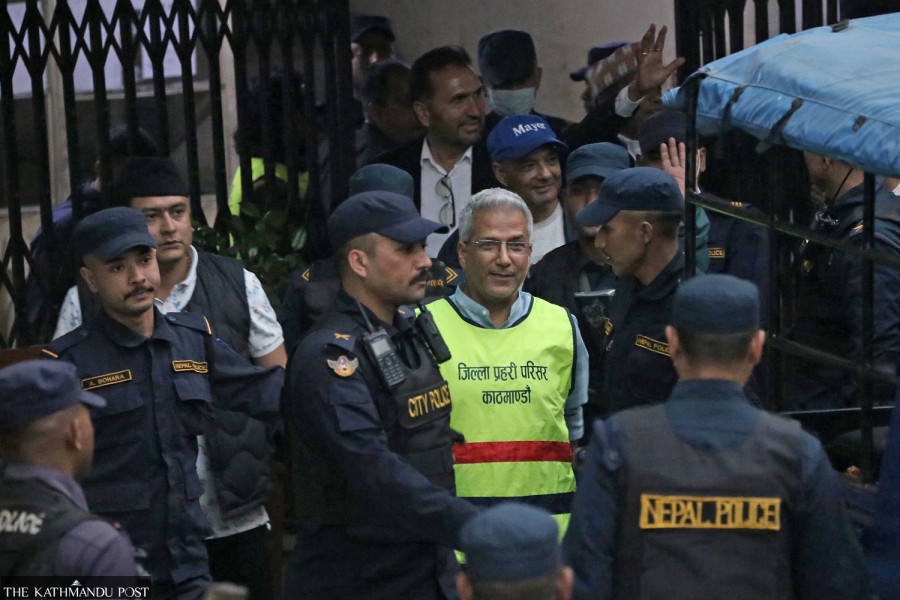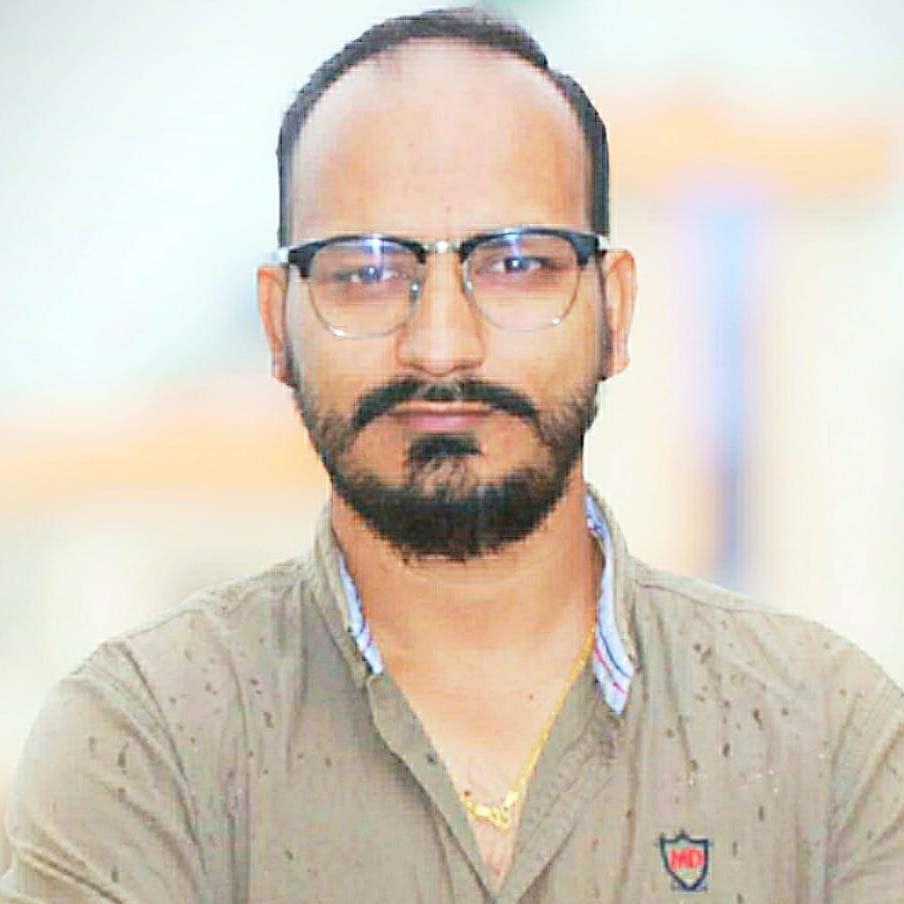National
Outcry after RPP leader taken to court in handcuffs
Experts divided on whether handcuffing was lawful or police overreach. Police dispute claims Rabindra Mishra is a prisoner of political conscience.
Purushottam Poudel
A month has passed since the royalist protest in Tinkune on March 28, but criticism of the government and police continues. Initially, the government faced backlash for failing to take adequate precautions. More recently, criticism has intensified over the treatment of Rastriya Prajatantra Party (RPP) senior vice-chair Rabindra Mishra, who was arrested for allegedly inciting the protest. His detention and the way police handled him have renewed public scrutiny of both the government and law enforcement.
On Sunday, senior vice-chair of the RPP leader Mishra was presented before the Kathmandu District Court by the Nepal Police for an extension of his remand. He was handcuffed at the time. A video clip showing him being led into the court in handcuffs has sparked criticism of the police. The controversy stems from the fact that a political detainee was handcuffed even on the court premises, prompting backlash against the police and government.
The police detained Mishra a month ago, on March 28, accusing him of inciting unrest during a protest organised in Tinkune by the Joint People's Movement Committee, a pro-monarchy campaign. On the same day, RPP General Secretary Dhawal Shumsher Rana was also arrested. Mishra, Rana, and several others linked to the incident had previously been brought before the court in handcuffs.
While Rana was released on bail after spending 24 days in custody, citing medical reasons, Mishra remains in police custody along with a few others in connection with the case. Mishra served as member secretary of the Joint People's Movement Committee.
On Sunday, the court granted a one-week extension for the ongoing investigation against Mishra. The police are investigating the RPP leaders on charges of sedition and organised crime. So far, the police have obtained a remand from the court on four separate occasions to keep him in custody for investigation purposes.
Twenty-four hours after his arrest, the police were first granted a five-day remand to keep Mishra in custody. On the second occasion, the court approved a 15-day extension, followed by a three-day remand on the third occasion.
Two individuals—a journalist and a commoner—were killed on the day of the protest whereas private and public property were also vandalised.
Under the law, the police are permitted up to 60 days to investigate cases related to organised crime. In the case of Mishra and others accused in connection with the Tinkune incident, the police still have 30 days remaining to conduct their investigation while keeping them in custody.
However, there has been growing criticism of the police and the government for keeping Mishra in continuous detention. Adding to the controversy is the fact that a detainee, held primarily due to political affiliations, was presented before the court in handcuffs—an act that has drawn further backlash.
However, former AIG of the police Pradyumna Karki points out that there is no clear definition of who qualifies as a ‘prisoner of political conscience’ and who does not. In the case of RPP senior vice-chairperson, Mishra, it may appear externally that he is a political figure arrested for participating in a political movement, which has led to him being labelled a political detainee, Karki said.
From the police’s perspective, however, since he is being investigated under charges of organised crime and sedition, it would not be accurate to categorise him as a political prisoner, the former AIG Karki said.
“As for the matter of him being handcuffed on the court premises, it is considered permissible—handcuffs are allowed within the court compound. What is not permitted is presenting someone in handcuffs before a judge,” Karki said.
But constitutional experts rubbish such claims made by the former police officer.
There are two types of states: one is the police state, and the other is the welfare state, which we also refer to as a constitutional state, said Bhimarjun Acharya, a constitutional expert.
“At one time in history, police states existed where governments could exercise power without limits—what we might today call authoritarianism,” Acharya said. However, moving away from that model, nations have gradually embraced the concept of the welfare state, where all state institutions, including the police, are accountable to the people, he added.
“Within this framework, the state must prioritise the preservation of every citizen’s human dignity. It is this very principle that forms the foundation of constitutional democracy,” Acharya adds, “Therefore, a person who is within the premises of the court should not be presented in handcuffs.”
“Not everything is explicitly written in the law—there is also what we call unwritten or implicit law. Under such norms, a person who has participated in a political gathering should not be treated as a criminal or be subjected to custodial detention in this manner,” Acharya argues.
In the Bhutanese refugee scandal, former home minister—Nepali Congress leader Bal Krishna Khand and CPN-UML leader and former minister Top Bahadur Rayamajhi—were not handcuffed when presented before the court, which was appropriate, Acharya says.
However, the state has demonstrated a double standard by presenting Mishra and others in handcuffs, highlighting an inconsistent and selective approach, he says.
A person participating in a political rally cannot be arrested and charged with sedition, according to Acharya.
However, police spokesperson Dinesh Kumar Acharya disagrees.
Regarding the issue of handcuffing Mishra, the police spokesperson argues that the dignity of an individual is secondary to the responsibility the police bear for a person in their custody. If a detainee were to escape, the police officer concerned would be held accountable, he said, justifying the use of necessary security measures, including handcuffs.
“Different interpretations on such matters are natural,” police spokesperson Acharya said. “The police do not categorise individuals as political detainees or something like that, once a person is remanded into police custody by the order of the court, full responsibility lies with the police.
He also argued that regarding how to restrain a detainee falls under the discretion of the designated custodial officer.
Former AIG Karki notes that in the current political system that emerged after the second people’s movement of 2006, the concept of prisoners of political conscience has not been widely recognised. However, he adds that in the political system prior to that, it was customary not to handcuff individuals detained for their political beliefs.
Pro-monarchy leaders and human rights organisations have been demanding an independent judicial investigation into the March 28 violence, which the government has rejected.
On April 6, four human rights organisations, including Amnesty International Nepal, demanded a fair and impartial investigation of the incidents and said it was unfair to charge Mishra and Rana with organised crime and sedition.




 22.38°C Kathmandu
22.38°C Kathmandu













.jpg&w=300&height=200)

